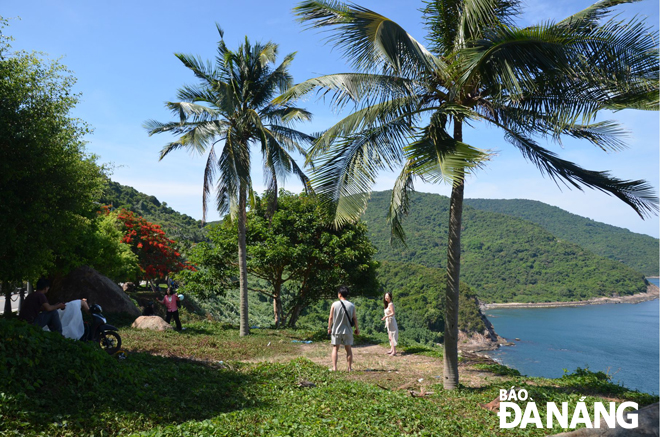Following a recent approval from the Da Nang authorities, a plan on managing and ensuring safety of visitors on the city’s Son Tra Peninsula will run from 15 November 2019 - 15 February 2020 on a trial basis.
Following a recent approval from the Da Nang authorities, a plan on managing and ensuring safety of visitors on the city’s Son Tra Peninsula will run from 15 November 2019 - 15 February 2020 on a trial basis.
 |
| A road leading to the Son Tra Peninsula |
The pilot plan aims to help the city increase the efficiency of managing the number of visitors and vehicles going to the peninsula every day, especially at night, in order to prevent accidents and timely handle unexpected incidents.
Also, it will help to ensure the security and defence, environmental sanitation, and fire prevention and fighting, as well as minimise the negative impacts on forest resources and ecosystems on the peninsula.
Besides, the operation of professional transportation vehicles will help offer visitors additional options for travelling vehicles to the peninsula.
Accordingly, scooters and over 24-seater tourist coaches will be banned from travelling to the peninsula.
Other vehicles will be allowed to travel on a road leading to the more-than-a-century-old banyan tree which intersects Hoang Sa Street, a road leading to the Ban Co (Chessboard) Peak and the Bai Bac tourist site which intersects Yet Kieu Street, and a road leading to the Om (Hug) Stream which intersects Yet Kieu Street.
Most notably, each of visitors coming to the peninsula will receive Entry Pass at security guard stations along the above-mentioned roads.
In addition, banning signs will be placed, and fence will be installed by the Son Tra-Ngu Hanh Son Forest Ranger Division to block entrance to other tourist sites.
Visitors will be allowed to visit the Son Tra Peninsula from 7.30am to 7.00pm daily, and visits are only allowed in this site after the regulated period if they get permissions from the municipal authorities. However, visits will be banned in the peninsula in case of unfavorable weather.

Over recent years, the peninsula has become more inviting to both domestic and foreign visitors thanks to its pure air, and many popular attractions.
As for scooters and over 24-seater tourist coaches, scooter drivers and tourists will have to use transit vehicles at transit areas located at the intersection of Hoang Sa and Le Duc Tho streets, or at a security guard station along a road leading to the Ban Co (Chessboard) Peak which intersects Yet Kieu Street, to travel to the peninsula.
Bellow are specific transit routes:
Route No 1: APEC Parking Area - more-than-a-century-old banyan tree. Time for travelling on the route is about 60 minutes.
Route No 2: Transit area at the intersection of Hoang Sa and Le Duc Tho streets - Vong Canh Hills - Helicopter Base - Ban Co Peak - heritage banyan tree - Linh Ung Pagoda - Transit area at the intersection of Hoang Sa and Le Duc Tho streets. Time for travelling on the route is about 180 minutes, and stopping time at each point is between 15 and 30 minutes.
Route No 3: Transit area at the intersection of Hoang Sa and Le Duc Tho streets -Red-shanked douc langur-watching area - Sightseeing point - Red-shanked douc langur-watching area - Tien Sa T-junction - Vong Canh Hills. Time for travelling on the route is about 130 minutes, and stopping time at each point is between 15 and 20 minutes.
In the future, the Management Board of the Son Tra Peninsula and Da Nang Tourism Beaches will make every effort to promote the development of environmentally responsible tourism, and eco-tourism on the peninsula.
The focus will be on offering tours to explore ecosystems and see wildlife for domestic and foreign visitors.
Heed will be paid to learning about management experience from some tourist sites and national parks both at home and abroad, including the Bach Ma National Park in Thua Thien Hue Province, the Ba Vi National Park in Ha Noi, and the Bako National Park in Malaysia.